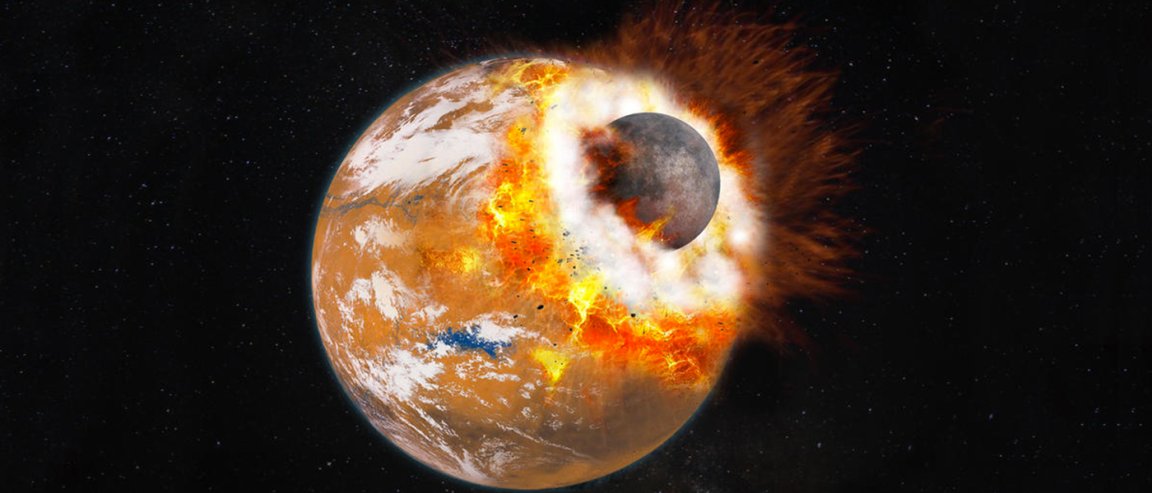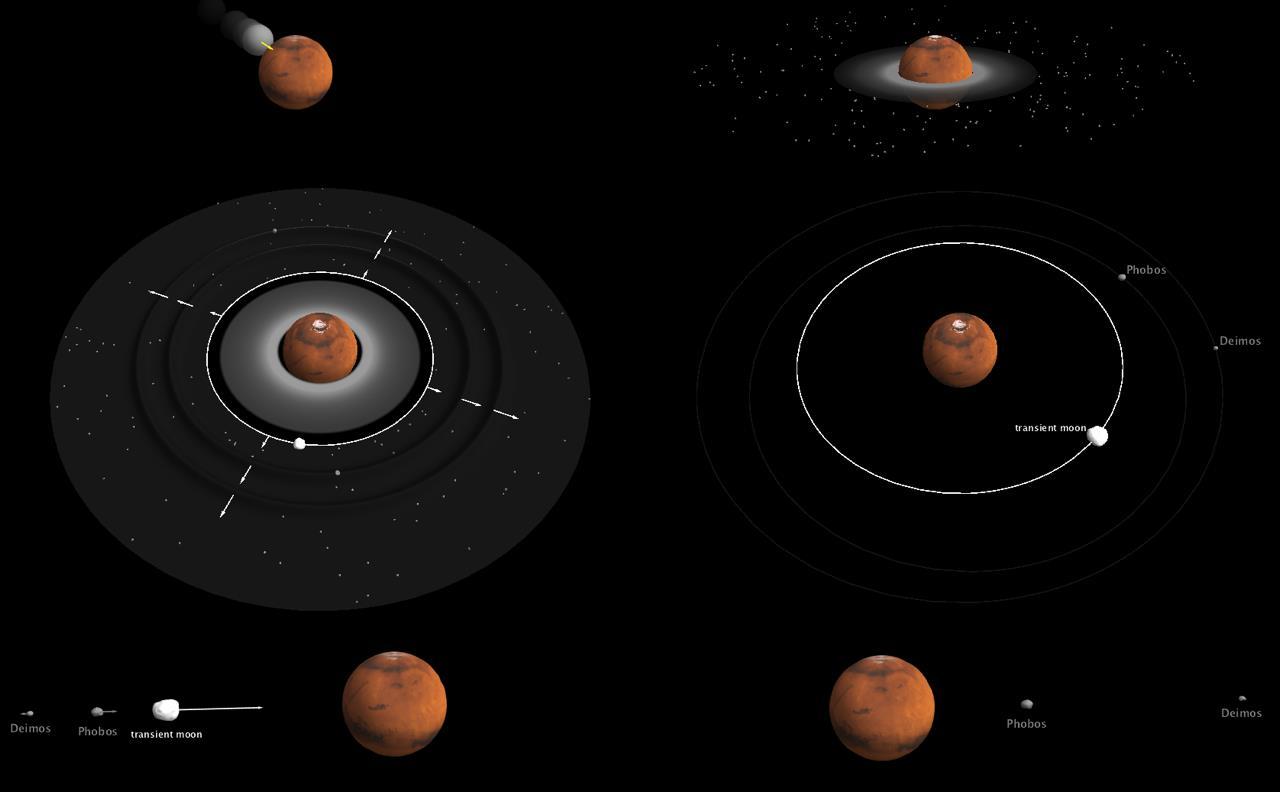
The Children of Mars
While much attention, time, and effort have been given to the Red Planet, less attention has been given to its two diminutive moons, Phobos and Deimos. Even their origin and composition remain a mystery.
But that may soon change.
A multidisciplinary study involving French, Belgian and Japanese researchers has proposed a model that may explain the origins of the two satellites and shed light on how moons develop in the Solar System.
In the past, two theories dominate the debate on the satellite’s history. One proposes capture, where the two are asteroids trapped by Mars’ gravity well. The other is that the moons formed from the debris of a collision between Mars and a protoplanet. This is the same theory proposed for our Moon’s formation (colorfully known as the “Big Splat”)—but how two satellites could form from such a process constituted a major hole in this argument, at least as far as Phobos and Deimos were concerned.

Patching Holes
But the new model fills the void in the impact argument. It contends that the two satellites formed because of a much slower axial rotation than what was the case with the Earth and Moon.
The study, published in Nature Geoscience, proposes the following chain of events:
Some 4 to 4.5 billion years ago (i.e., very early in the Solar System’s history), Mars suffered a colossal impact with a body about a third of its size. The debris, captured by Mars’ gravity, formed into a disk à la Saturn’s glorious adornment. Here an enormous moon a thousand times the mass of Phobos gradually formed. This is exactly the scenario that created our Moon.
But the divergence occurs because of the slower rotation speeds. Earth took less than 4 hours to spin on its axis whereas Mars rotated very slowly over a 24-hour period. The slower rotation allowed the debris to coalesce into smaller moons. These moons were all forced by Martian tidal action to fall back onto the planet’s surface (including the largest one), leaving only the two most distant moons: Phobos and Deimos.
The theory may also explain another longstanding Martian mystery: why its northern hemisphere is lower in altitude than its southern. The Borealis Basin, it turns out, may be the remnant of this primordial, moon-forming impact.
However, while this establishes a concrete theory, it is still speculation until future missions collect images and samples that prove that the moons are composed of a mixture of Martian mantle and debris.